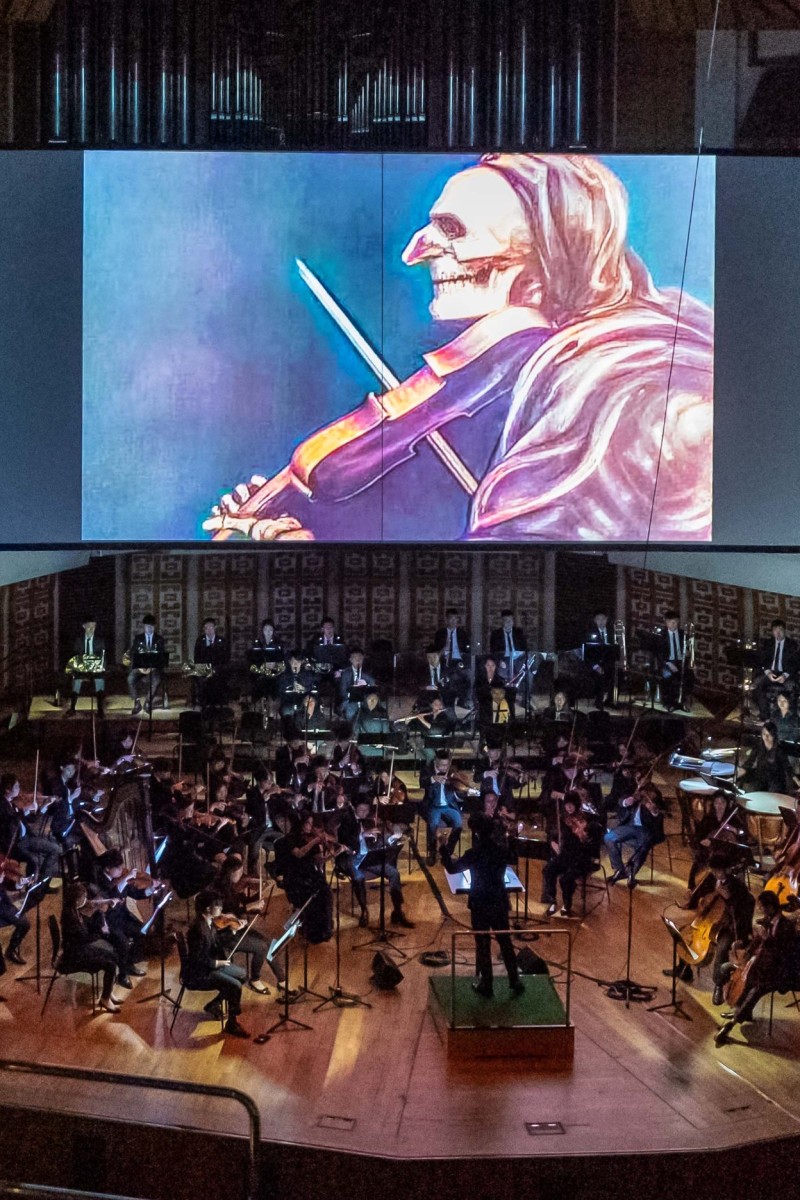
Hong Kong Baptist University computer scientists use AI to give colour to 1922 movie Danse Macabre
- Colour version of the black-and-white horror film premiered last month at Baptist University Symphony Orchestra’s annual gala concert
- Professor leading the film rejuvenation project says the artificially intelligence algorithm can help modern audiences appreciate classic movies
 “Danse Macabre”, directed by Dudley Murphy, depicts the story of two lovers who try to escape Death’s grasp as the Black Plague ravages Spain. Photo: Handout
“Danse Macabre”, directed by Dudley Murphy, depicts the story of two lovers who try to escape Death’s grasp as the Black Plague ravages Spain. Photo: HandoutComputer scientists at Hong Kong Baptist University have given the 1922 film Danse Macabre a new lease on life by using artificial intelligence to add colour to the classic black-and-white horror movie.
Last month, audiences at Baptist University Symphony Orchestra’s annual gala concert watched the premiere of the colour version, while musicians played Danse Macabre by composer Saint-Saëns, adding sound to the silent film.
“I feel very excited seeing the result of the film rejuvenation,” said Johnny Poon, the concert’s conductor and the associate vice-president for interdisciplinary research at Baptist University.
“Our school’s computer scientists helped to breathe new life into the classic film, which brought the bygone century back to our present.”
Dr Wan Renjie, an assistant professor of computer science at Baptist University, led the film rejuvenation project.
“Silent movies are important archives of our history, and their roles are just as crucial as cultural relics around the world. However, few people can appreciate their value due to film degradation over time,” he said.
Wan added that he hoped this AI project could help contemporary audiences have more appreciation for old films.
Danse Macabre, which translates to “dance of death”, was directed by Dudley Murphy, and it depicts the story of two lovers, Youth and Love, who desperately try to escape Death’s grasp as the Black Plague ravages Spain.
Face Off: Are AI tools such as ChatGPT the future of learning?
Wan explained two major steps in the film rejuvenation process: restoration and colourisation.
“Video restoration aims to improve the quality of the original footage,” the professor said. “The second step is video colourisation. We utilise machine learning and image processing to add colour to the footage.”
Under time constraints, Wan’s team managed to prepare and apply the algorithm for the restoration and colourisation in about four days.
Although the AI model made this process more efficient, the computer scientists still had to provide specific instructions for colourisation, in addition to making corrections after the algorithm was applied.
“AI learns colours in a similar way to children. If AI learns from the training data that swans are white, it may not recognise a black swan,” Wan explained.
The team also employed “neural radiance field” technology, which analyses the relationships between every frame to ensure the consistency of colours throughout the film.
The next step in this project is to conduct further research on video prediction, which will fill in missing video footage and create new scenes. Wan said the team expected to complete this process in six to seven months.
The professor shared that this algorithm could have applications beyond film rejuvenation: “The [AI] model may help people to shoot clearer photos and can be used to edit video scenes to our desire.”
However, he noted that his team would also look into the downsides of this technology, as it could be used to create fake videos and spread disinformation.
“How to solve these AI security issues will also be our consideration,” Wan said.
